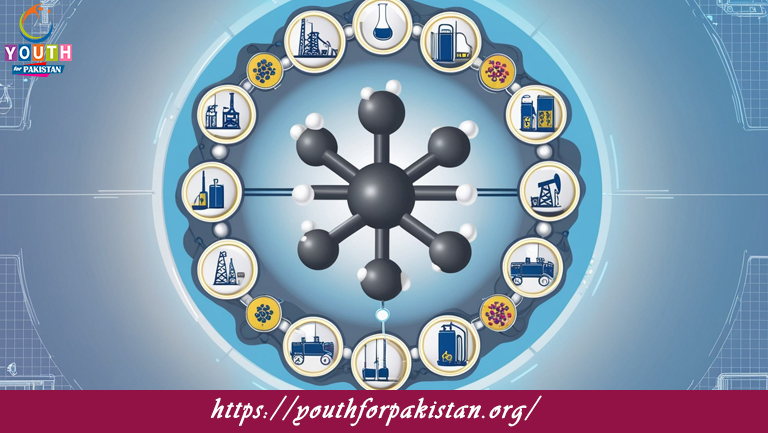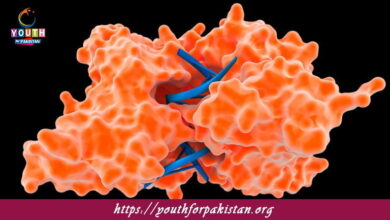Chemistry Of Hydrocarbons MDCAT MCQs with Answers

Welcome to the Chemistry Of Hydrocarbons MDCAT MCQs with Answers. In this post, we have shared Chemistry Of Hydrocarbons Multiple Choice Questions and Answers for PMC MDCAT 2024. Each question in MDCAT Chemistry offers a chance to enhance your knowledge regarding Chemistry Of Hydrocarbons MCQs in this MDCAT Online Test.
Which of the following hydrocarbons is an alkene?
a) Methane
b) Ethylene
c) Propane
d) Butyne
The general formula for alkanes is:
a) CnH2n
b) CnH2n+2
c) CnH2n-2
d) CnH2n+4
What type of reaction occurs when alkanes react with halogens?
a) Addition reaction
b) Substitution reaction
c) Elimination reaction
d) Condensation reaction
Which of the following is the simplest alkyne?
a) Ethyne
b) Butyne
c) Propyne
d) Methane
Benzene is an example of which type of hydrocarbon?
a) Alkane
b) Alkene
c) Alkyne
d) Aromatic
The process of converting alkenes to alkanes is known as:
a) Hydration
b) Hydrogenation
c) Halogenation
d) Oxidation
Which hydrocarbon contains a triple bond?
a) Ethylene
b) Propylene
c) Acetylene
d) Butane
The reaction of ethylene with bromine is an example of:
a) Addition reaction
b) Substitution reaction
c) Elimination reaction
d) Oxidation reaction
Which of the following is a characteristic feature of aromatic hydrocarbons?
a) Presence of a ring structure with alternating double bonds
b) Presence of a triple bond
c) Presence of a hydroxyl group
d) Saturation with hydrogen
Which hydrocarbon is used in the preparation of synthetic rubber?
a) Ethylene
b) Propylene
c) Butadiene
d) Benzene
The formula C4H10 represents which type of hydrocarbon?
a) Alkane
b) Alkene
c) Alkyne
d) Aromatic
The reaction between an alkene and sulfuric acid is an example of:
a) Addition reaction
b) Substitution reaction
c) Elimination reaction
d) Oxidation reaction
Which of the following hydrocarbons is a member of the alkyl group?
a) Methane
b) Ethylene
c) Propane
d) Ethyl
What is the main product of the combustion of alkanes?
a) Carbon dioxide and water
b) Carbon monoxide and water
c) Carbon dioxide and oxygen
d) Water and hydrogen
The reaction of alkynes with hydrogen chloride yields:
a) Alkanes
b) Alkenes
c) Alkyl halides
d) Aromatic compounds
Which of the following is an example of a cyclic hydrocarbon?
a) Cyclohexane
b) Ethylene
c) Propylene
d) Butane
The process of adding hydrogen to alkenes to form alkanes is called:
a) Dehydrogenation
b) Hydrogenation
c) Hydrolysis
d) Oxidation
The reaction of benzene with nitric acid is an example of:
a) Friedel-Crafts acylation
b) Friedel-Crafts alkylation
c) Nitration
d) Halogenation
Which of the following hydrocarbons has a double bond?
a) Ethyne
b) Ethylene
c) Propane
d) Methane
The hydrocarbon with the formula C3H4 is known as:
a) Propylene
b) Propane
c) Propadiene
d) Cyclopropane
Which of the following is not a characteristic of alkynes?
a) Presence of a triple bond
b) Unsaturated hydrocarbons
c) Formula CnH2n+2
d) Examples include acetylene
The reaction of alkenes with halogens results in:
a) Formation of dihaloalkanes
b) Formation of alcohols
c) Formation of alkanes
d) Formation of carboxylic acids
Which hydrocarbon is known for its use in fuel and as a raw material in the petrochemical industry?
a) Methane
b) Benzene
c) Ethanol
d) Acetylene
The main product of the cracking of hydrocarbons is:
a) Larger alkanes
b) Smaller alkanes and alkenes
c) Alcohols
d) Ethers
The reaction of alkyl halides with metals forms:
a) Alkanes
b) Alkenes
c) Alkynes
d) Alkyl groups
Which of the following is used as a starting material for the synthesis of various organic compounds?
a) Methane
b) Ethanol
c) Acetic acid
d) Benzene
Which of the following hydrocarbons has a ring structure and is an aromatic compound?
a) Cyclohexane
b) Cyclohexene
c) Benzene
d) Cyclopropane
The process of removing hydrogen from alkanes to form alkenes is called:
a) Hydrogenation
b) Dehydrogenation
c) Addition
d) Substitution
Which of the following is a property of alkenes?
a) Saturated hydrocarbons
b) Double bonds
c) Single bonds
d) Triple bonds
The formula C5H12 represents which type of hydrocarbon?
a) Alkane
b) Alkene
c) Alkyne
d) Aromatic
Which hydrocarbon is used in the manufacture of plastics and synthetic fibers?
a) Methane
b) Ethylene
c) Benzene
d) Acetylene
The reaction of alkenes with ozone followed by zinc and water is known as:
a) Ozonolysis
b) Hydrogenation
c) Halogenation
d) Hydrolysis
Which of the following is not an example of an aromatic hydrocarbon?
a) Toluene
b) Xylene
c) Benzene
d) Propylene
Which of the following is the simplest member of the alkyne family?
a) Ethylene
b) Ethane
c) Acetylene
d) Propylene
The reaction of alkynes with water in the presence of a catalyst yields:
a) Alcohols
b) Alkanes
c) Aldehydes and ketones
d) Alkenes
The main product of the polymerization of ethylene is:
a) Polyethylene
b) Polystyrene
c) Polypropylene
d) Polyvinyl chloride
Which of the following hydrocarbons has the highest boiling point?
a) Ethylene
b) Propylene
c) Butane
d) Benzene
The reaction of alkanes with chlorine in the presence of light is an example of:
a) Substitution reaction
b) Addition reaction
c) Elimination reaction
d) Oxidation reaction
Which of the following hydrocarbons has a triple bond?
a) Ethylene
b) Propylene
c) Butyne
d) Benzene
The formula C6H12 represents which type of hydrocarbon?
a) Alkene
b) Alkyne
c) Cycloalkane
d) Aromatic
If you are interested to enhance your knowledge regarding Physics, Chemistry, Computer, and Biology please click on the link of each category, you will be redirected to dedicated website for each category.





